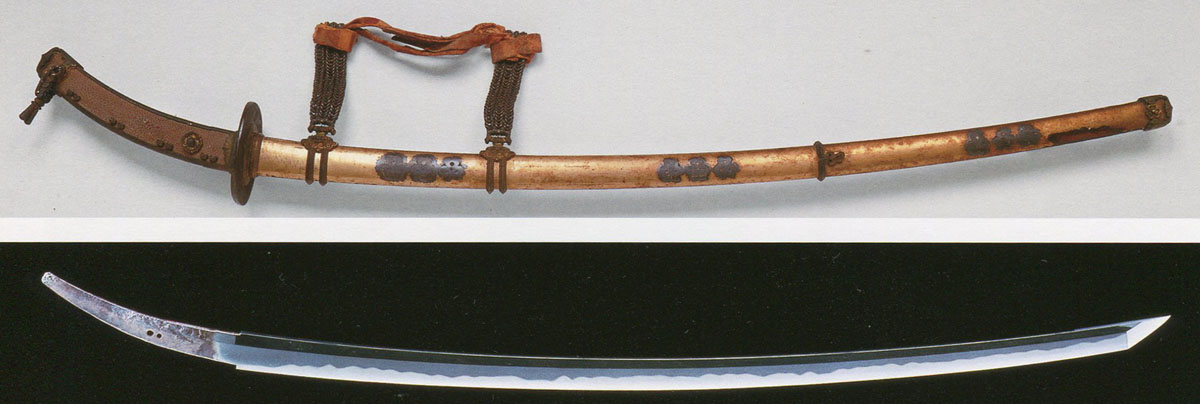Sometimes we find originally unsigned blades with poor quality. We can consider that the smith didn't put his signature being ashamed his poor skill. On the other hand, we can find also originally unsigned blades with very good quality. It illustrates a culture of old Japan.
Example
=> Wakizashi mumei (Gassan)
Japanese smiths don't inscribe their signature on the blade, but put it on the tang behind the handle. They don't like to display their name loudly. Some smiths put only their school's name, but no individual name. Such smiths are Ichimonji, Gassan and some others. Their behaviour may come from the same idea. This is an opposite idea against egoism. In old Japanese, ego is a kind of dirt in spirit.
In medieval Japan, when a smith makes a blade for some god or Buddha, he tries to make a best blade, but no will to put his signature on the tang. He refrains from putting his signature on the holy thing that will offer in shrine or temple. When the smith gets an order from some high class lord, he takes the same way. It is a manner to respect the objects humbling the smith himself.
The originally unsigned blades with good quality would be made in such situation. Probably they were made for some god or Buddha, or by order from high class person.
They say that the reason why most of Masamune blades are originally unsigned is he got orders from the heads of samurai in Kamakura government.
Many of blades in Yamato province are originally unsigned too. Most of them were made for the temples. There were several great temples in Yamato province back then. Still today, Yamato province (Nara prefecture) is well known as an region of old temples.
Next example will illustrate that belief well.
The Ise shrine is one of the oldest shrines in Japan. The shrine rebuilds the palace every 20 years. At the same time, all the treasures in the palace also are replaced with new ones. The system has been kept over 1,000 years. There are many swords in the palace which keep very old style. They are all straight, no curvature. The swords also are newly made every 20 years. The top smiths in Japan are selected and honoured to offer that treasure swords. To make the swords, there was a promise that the smiths never put their signature on the tang. The treasures must be no-signature. The rule was held over 1,000 years. A couple of times ago of the rebuilding, a living national treasure smith broke the rule. He inscribed his signature on the tang as his responsibility of making the treasures. We heard that all the swords in the shrine have smith's signature on the tang today.
The old idea to kill personal ego may be not acceptable in modern age. But we should know there was such a belief in old days.
An example of votive sword to the Kasuga-taisha shrine in Nara

The blade is originally no-signature on the tang. The blade looks Ko-Bizen school in 12th century. It was kept deep in the shrine as untouchable treasures for hundreds years. Recently it was released down from the palace, and re-polished. Now, it is exhibited at the treasury of Kasuga-taisha shrine.